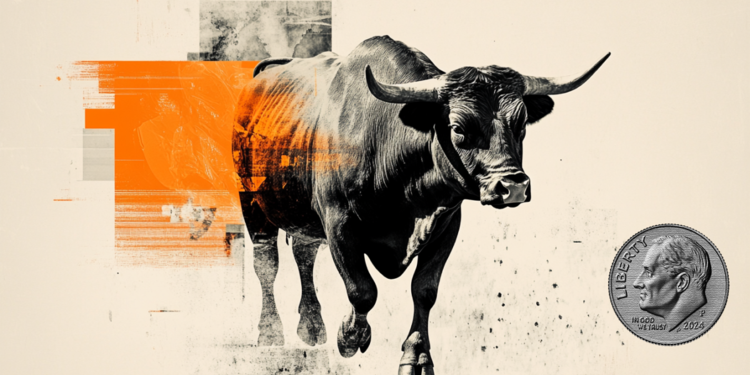- The Indian Rupee softens in Friday’s Asian session.
- Month-end USD demand and persistent foreign fund outflows weigh on the INR.
- Traders await India’s Q4 GDP data ahead of the US PCE inflation report, which will be released on Friday.
The Indian Rupee (INR) trades with mild losses amid the month-end US Dollar (USD) demand on Friday. The muted trend in domestic markets and persistent foreign fund outflows continue to weigh on investor sentiments, undermining the local currency. Furthermore, the latest tariff announcements from US President Donald Trump have sent shockwaves through global markets, strengthening the Greenback.
Any significant depreciation might be limited amid the likely intervention from the Reserve Bank of India (RBI) in the foreign exchange market via USD sales. Traders will keep an eye on India’s Gross Domestic Product (GDP) for the fourth quarter (Q4), which is due later on Friday. On the US docket, the Personal Consumption Expenditures (PCE) Price Index will be in the spotlight. Also, the Federal Reserve’s (Fed) Thomas Barkin is scheduled to speak later on the same day.
Indian Rupee remains weak amid foreign outflows and regional cues
- “We expect the rupee to trade with a negative bias on account of weakness in the domestic markets and sustained outflows by FIIs. Any further pullback in the US dollar may also pressurise the rupee. However, any intervention by the RBI and weakness in crude oil prices may support the rupee at lower levels,” said Anuj Choudhary, Research Analyst at Mirae Asset Sharekhan.
- India’s GDP is estimated to have grown 6.2% in the three months to December, according to a median estimate of economists surveyed by Bloomberg.
- Trump on Thursday said his proposed 25% tariffs on Mexican and Canadian goods will take effect on March 4, along with an additional 10% duty on Chinese imports because deadly drugs are still pouring into the US from those countries.
- The US Gross Domestic Product (GDP) expanded at an annual rate of 2.3% in the fourth quarter, according to the US Bureau of Economic Analysis (BEA) on Thursday. This figure matched the initial estimate and came in line with the market expectation.
- Philadelphia Fed President Patrick Harker on Thursday expressed support for continuing to hold the interest rate in the current range, which he believes will help get inflation back down to the Fed’s 2% target but isn’t hurting the job market or the economy more generally.
USD/INR paints a positive picture in the longer term
The Indian Rupee weakens on the day. The strong bullish outlook of the USD/INR pair remains intact as the price remains above the key 100-day Exponential Moving Average (EMA) on the daily timeframe. The upward momentum is supported by the 14-day Relative Strength Index (RSI), which stands above the midline near 63.35, suggesting that the support level is likely to hold rather than break.
The immediate resistance level for the pair emerges at 87.40, the high of February 27. Bullish candlesticks above this level could signal fresh buying demand, potentially pushing the price back to an all-time high near 88.00, en route to 88.50.
On the other hand, the initial support level for USD/INR is seen at 86.48, the low of February 21. If red candlesticks appear, the next stop might be 86.14, the low of January 27, followed by 85.65, the low of January 7.
Indian Rupee FAQs
The Indian Rupee (INR) is one of the most sensitive currencies to external factors. The price of Crude Oil (the country is highly dependent on imported Oil), the value of the US Dollar – most trade is conducted in USD – and the level of foreign investment, are all influential. Direct intervention by the Reserve Bank of India (RBI) in FX markets to keep the exchange rate stable, as well as the level of interest rates set by the RBI, are further major influencing factors on the Rupee.
The Reserve Bank of India (RBI) actively intervenes in forex markets to maintain a stable exchange rate, to help facilitate trade. In addition, the RBI tries to maintain the inflation rate at its 4% target by adjusting interest rates. Higher interest rates usually strengthen the Rupee. This is due to the role of the ‘carry trade’ in which investors borrow in countries with lower interest rates so as to place their money in countries’ offering relatively higher interest rates and profit from the difference.
Macroeconomic factors that influence the value of the Rupee include inflation, interest rates, the economic growth rate (GDP), the balance of trade, and inflows from foreign investment. A higher growth rate can lead to more overseas investment, pushing up demand for the Rupee. A less negative balance of trade will eventually lead to a stronger Rupee. Higher interest rates, especially real rates (interest rates less inflation) are also positive for the Rupee. A risk-on environment can lead to greater inflows of Foreign Direct and Indirect Investment (FDI and FII), which also benefit the Rupee.
Higher inflation, particularly, if it is comparatively higher than India’s peers, is generally negative for the currency as it reflects devaluation through oversupply. Inflation also increases the cost of exports, leading to more Rupees being sold to purchase foreign imports, which is Rupee-negative. At the same time, higher inflation usually leads to the Reserve Bank of India (RBI) raising interest rates and this can be positive for the Rupee, due to increased demand from international investors. The opposite effect is true of lower inflation.
Read the full article here















